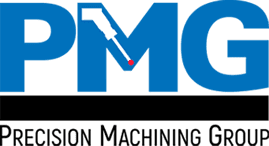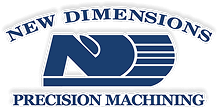Anchor Harvey Frequently Asked Questions
Looking to learn more about forging? Our FAQs provide clear, concise answers to the most common questions—making it easy to understand the process, tools, and techniques all in one place.
Forging
Metal forging is a precision manufacturing process that reshapes metal under compressive force. This process enhances the grain structure and mechanical properties of the material, making it ideal for high-performance applications.
Metal forging is a specialized metal forming process that uses compressive forces, often with heat, to shape metal. As a subset of metal forming, forging improves material strength, toughness, and durability.
The primary types of metal forging include:
- Closed-Die Forging (Impression Die Forging): Pressing or hammering metal between two dies that contain the desired shape.
- Open-Die Forging: Deforming metal between flat dies without pre-cut profiles.
- Press Forging: Using slow, continuous pressure to shape the metal.
- Cold Forging – Forging process done at ambient temperatures. Reduced ability to make cross sectional changes to the starting shape.
Anchor Harvey specializes in closed-die aluminum forging, where heated metal is shaped within enclosed dies under high pressure to produce precise, high-strength components.
Anchor Harvey forges precision aluminum components for aerospace, medical, motorsports, automotive, archery, electric vehicles, fire suppression, defense, heavy equipment, construction, specialty markets, and machine shops.
Forged components outperform cast or machined parts in strength, fatigue resistance, and structural integrity. These qualities make them ideal for high-load and demanding environments. Forgings also offer a superior surface finish.
Forging refines the grain structure of metal, improving strength, toughness, and fatigue resistance. Forgings are porosity free. It also eliminates internal voids (porosity), enhancing overall durability and reliability.
Unlike extrusion, which forces metal through a die to create fixed cross-sections, forging aligns the grain flow of the metal, resulting in superior strength and fatigue resistance. Forging can generate complex geometry vs. the linear geometry limitations of extrusions.
Open-die forging is a metal shaping process where a heated metal workpiece is placed between flat or simple-shaped dies and deformed through repeated blows or pressure, without fully enclosing the material. Closed-die forging encloses the metal in shaped dies, enabling more complex and precise geometries.
Anchor Harvey primarily forges aluminum alloys, including:
- 2000 Series (e.g., 2014-T6, 2014-T651)
- 6000 Series (e.g., 6061-T6, 6061-T651)
- 7000 Series (e.g., 7075-T6, 7075-T651)
- We also offer forged magnesium, brass, and copper solutions.
Regular aluminum refers to a material that may be cast or extruded. Forged aluminum undergoes compressive deformation, resulting in stronger, more durable components with refined grain structure and improved mechanical performance.
Anchor Harvey uses a variety of grades from the 2000, 6000, and 7000 series of aluminum, each offering different strengths, machinability, and corrosion resistance properties suited to different industries.
Anchor Harvey serves key U.S. manufacturing industries, including aerospace, specialty automotive, motorsports, heavy equipment & construction, agriculture, fluid power, energy, medical, automation/robotics, and specialty OEMs.
The best forging method depends on material, geometry, tolerances, and intended use. Anchor Harvey’s engineering team can assist with selecting the most suitable forging process for your application.
The Anchor Harvey forge mark represents the company’s commitment to precision, quality, and performance in forged aluminum components. Anchor Harvey’s ‘Split A’ is a symbol of trust built over a century of forging expertise.
Anchor Harvey uses a range of screw and mechanical presses, including:
- 5,500-ton screw presses (x2)
- 4,100-ton screw press
- 2,100-ton screw press
- 1,600-ton mechanical press
- 1,300-ton mechanical press
Anchor Harvey offers in-house tool and die manufacturing using advanced CNC machining and high-performance tool steels. This improves die life, allows for custom tooling, and shortens lead times.
Yes, Anchor Harvey provides end-to-end engineering support, from initial concept to production. Services include CAD design, 3D modeling and printing, forge simulation, and process optimization.
Their forging presses can handle parts from a few ounces to 50 lbs. Press capacities range up to 5,500 tons, accommodating a wide variety of sizes and complexities.
Anchor Harvey can forge parts up to 36 inches in length or width, depending on geometry and weight, which can range from ounces to 50 lbs.
We specialize in aluminum alloys from the 2000, 6000, and 7000 series and offer forged magnesium solutions for applications requiring extreme lightweight performance.
Forged magnesium offers an outstanding strength-to-weight ratio and is ideal for high-performance, lightweight applications in industries like aerospace, automotive, and defense.
Anchor Harvey is CQI-9 certified and performs in-house heat treatment to achieve specific Tempers and mechanical properties based on alloy and end-use requirements.
By refining grain structure and eliminating porosity, their forging process produces high-strength components with smaller cross section, and reduced weight, which is ideal for industries demanding performance and efficiency.
Anchor Harvey ensures quality through real-time process monitoring, full in-house inspection capabilities, and adherence to rigorous industry certifications, including AS9100 and ISO 9001. Our dedicated quality control team verifies that every component meets exacting standards, and we partner with trusted external labs for specialized testing and rapid turnaround when needed.
Yes, we monitor every step of the forging process in real time to ensure precision, consistency, and conformity from the first part to high-volume production runs.
We use real-time process monitoring, quality audits, advanced inspection equipment, and certifications like AS9100 and ISO 9001 to ensure consistent part quality.
Forging compresses and aligns metal grains, improving tensile strength, fatigue resistance, and structural integrity over other manufacturing methods like casting or machining.
High-quality forged parts have consistent grain flow, precise tolerances, no internal voids, superior surface finish, and meet specified mechanical properties through stringent process controls and testing.
Certifications ensure adherence to industry standards for quality, traceability, and process control, giving customers confidence in the consistency and safety of the final product.
Anchor Harvey is certified to:
- AS9100 (aerospace quality management)
- ISO 9001 (general quality systems)
- CQI-9 (heat treat compliance)
- ITAR (defense compliance)
Yes, certifications like ISO 9001 and AS9100 are internationally recognized, supporting global customer requirements and supply chain integration.
We require process standardization, documented quality controls, periodic audits, and continuous improvement—all of which maintain product quality and customer satisfaction.
Anchor Harvey undergoes regular external audits and internal reviews to maintain certification status and improve systems and practices.
Anchor Harvey’s CNC machining facilities are located nationwide, with facilities in Schaumburg, IL, Union, IL, and Greenwood, Arkansas.
Components are inspected using full PPAP processes, 3D scanning, CMM layouts, and other dimensional verification methods to ensure conformity with design specifications.
Anchor Harvey’s CNC facility is equipped to handle both high-volume production and smaller, custom runs. With advanced multi-axis CNC machines and automated systems, it delivers consistent precision and fast turnaround times.
Anchor Harvey welcomes prospective customers and partners to tour their facilities. Tours can be scheduled by contacting their team directly to ensure availability and coordination with safety protocols.
Anchor Harvey’s CNC machining facilities are located nationwide, with facilities in Schaumburg, IL, Union, IL, and Greenwood, Arkansas.







